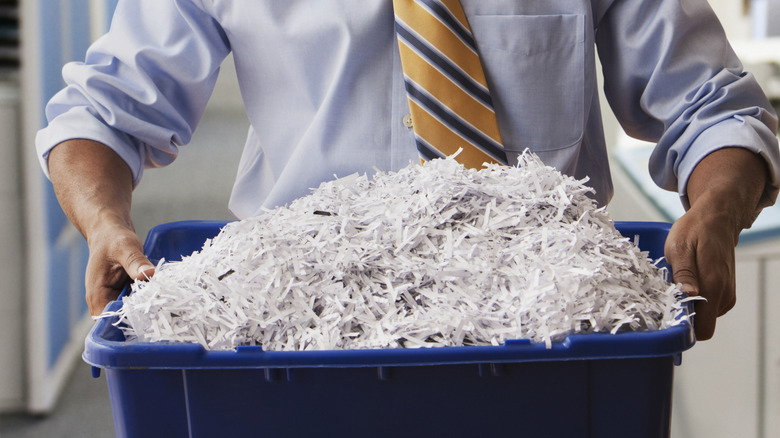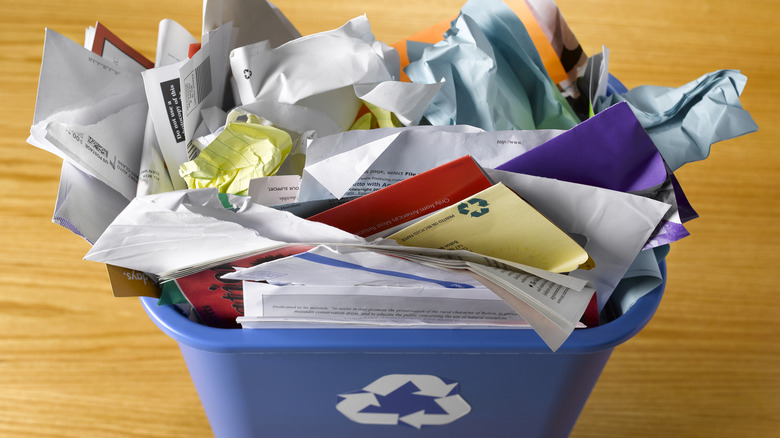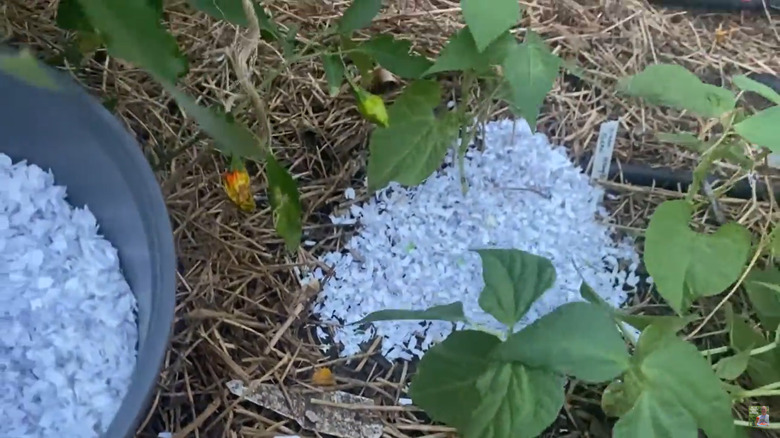Why Do Some People Use Shredded Paper As Garden Mulch, And Should You Try It?
Did you know that shredded paper is difficult to recycle? In general, the smaller the pieces, the harder it is for facilities to sort into the right channels. Yet there are times when shredding documents is absolutely necessary. Shredded paper has some traction as an eco-friendly garden mulch that, like other types of mulch, helps keep weeds at bay and hold vital moisture.
This sustainable home hack is easily put into action, and since this type of mulch has been living indoors, there's no risk of it bringing in unwanted seeds or pests. As long as the ink on the paper is vegetable-based and the paper isn't bleached, heavily printed, or coated in non-compostable or toxic material, save it from the landfill and add it to your garden.
Unbleached printer paper, newspapers, and some junk mail all can step in as a handy and effective mulch that doesn't cost you a penny. This stuff is a great additive to both active and resting garden plots. Along with weed control and moisture retention, shredded paper helps regulate soil temperature and breaks down into helpful organic matter that improves soil quality. However, whether or not you should top your beds with the stuff depends highly on what kind of paper it is and how you apply it.
There are a few drawbacks
Using shredded paper in the garden might seem like a win-win: It can do your garden some good while keeping waste out of landfills. But among the many benefits of trying this, there are a few negatives you should keep in mind. Some home gardeners complain that when they've mulched with shredded paper, the pieces don't break down well enough. The paper also tends to pack itself into a solid layer that doesn't allow moisture to pass through. Using light amounts of shredded paper and/or mixing in other types of mulch may put a halt to this problem.
Getting extra use out of waste paper is a wise way to score free mulch for your yard or garden. Shredded paper certainly has its place as a mulch, but too much of even the right kind can negate the benefits. One downside of shredded paper mulch is its unsightliness and potential to be carried away by wind. You can eliminate that factor by covering it with other materials, like leaves, compost, or manure, after you've moistened the paper thoroughly.
Paper mulch the right way
Not every type of paper is right for mulching. Certain papers and inks can leach toxins into the soil or not break down well. Steer clear of paper with lots of printing on it, particularly with colorful ink; this includes color-printed newspaper and magazine pages, especially their covers. Research has shown that some of these inks have contributed to pollution and may have adverse health effects on humans. Glossy paper is often highly printed and sometimes has a plastic or chemical coating that doesn't biodegrade properly and can introduce unwanted substances to your soil. Thermal paper, which many receipts are printed on, is a big no-no when it comes to paper mulching since it's heavily treated with toxic chemicals.
Instead, if you work in an office that generates lots of shredded paper, this can be a smart source of paper mulch. First, make sure that the paper is unbleached and that your office will allow you to take it out of the building. And the next time you open a package and it's filled with brown kraft crinkle paper, this is also a safe and beneficial soil topper.
Shredded paper can also be a great component of sheet mulching. Also known as lasagna gardening or lasagna composting, this process involves layering different biodegradable materials to suppress weeds around growing plants or to prepare the soil in an unoccupied garden bed. Don't overdo your layer of shredded paper; the paper layer shouldn't be thicker than 2 inches.


